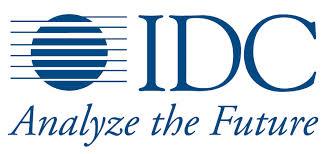Dear Mr. Campbell,
On August 31, Vedomosti, one of Russia's leading newspapers, published an article referring to a special study by IDC entitled "Total cost of ownership of IT infrastructure in Russian schools", which had been ordered by Moscow municipal center of information technology and educational equipment (http://www.vedomosti.ru/newspaper/article/244690/idc_sela_za_partu).
The article targets the comparison of the total cost of ownership (TCO) of free and non-free software in schools.
The conclusions set forward in such a study are of major significance in Russia now, as by the end of the year 2010, all of the 55,000 secondary schools in the country must decide whether to migrate to free software or to purchase Microsoft products and other proprietary software instead. Therefore, the findings of the study authored by IDC may significantly affect the procurement decisions by schools, and a mistake in the analysis may lead to losses of the Russian taxpayers' money and damage the reputation of IDC.
Unfortunately, the examination of IDC's study shows that it is based on the incorrect data, does not fully take into account the Russian realities and contains a number of gross mistakes in its findings. Feeling doubtful that such material could have originated from the experts of such a reputable agency as IDC, I turned to Mr Robert Farish, IDC's Regional Managing Director for Russia and CIS countries. In his reply, Mr Farish confirmed the authorship of IDC and further explained that, according to the task statement for the project, the study was based on the data "offered by the client for use with a particular scenario". He also noted that there are other scenarios, where the comparison of the total cost of ownership of free and proprietary software would lead to different results. Mr Farish also expressed regret that the publication in Vedomosti had not been agreed upon with IDC, which had left him no opportunity to give the right explanations.
I have always believed that an honest analyst must first of all check the credibility of the data, upon which he develops his findings, or, in the very exceptional case, explicitly indicate that the study is based on unverified data. Otherwise, any customer could simply supply IDC with misleading data, get the research findings in accord with his own interests and later refer to these findings as an authoritative source. In the present case, the scope of analytical work was artificially constrained in the project task statement.
I will briefly reproduce the essential points of the study. The analysis is based on the data assembled for the city of Moscow. The analyst states that all the components that affect the resulting TCO have the same values for free and non-free software, except the license fees and the cost of training for teachers.
The license fees for non-free software are estimated to be $38 per year for one seat, which includes $8 for Microsoft products and $30 for "other products". The licensing costs for free software are estimated to be $36 per year for one seat, including $6 for the Linux distribution and $30 for "other software". The author concludes that "the costs of the acquisition of licenses and support of any software, whether it is proprietary or open source, does not amount to more than 5% of the total cost of ownership and cannot be regarded as a decisive criterion in the choice of a particular type of software".
The cost of training for teachers is calculated based on the assumption that 80% of the 58,000 teachers have been trained in information technology, the training cost amounting to about $1,000. It is stated that the migration to free software may require supplementary training for teachers, the cost of which is estimated to be $450. Later on, the TCO calculations are based on the assumption that supplementary training will be required for all teachers.
As a result, the analyst concludes that the TCO for free software is higher by 3.3%.
The data used in the study issued by IDC are corrupt. Let me give a few examples:
- When assessing the cost of free software licenses, the author ignores the fact that all the necessary applications are already provided as part of the Linux distribution, and therefore, there is no need to separately procure any "other software". My statement is based on the list of software applications for secondary schools that was officially adopted by the Russian government (Edict of the Government of the Russian Federation from October 18, 2007 N 1447-p), as well as on the fact that a specially tailored Linux distribution in full conformance with these requirements was developed under the commission of the Ministry of education of the Russian Federation. Therefore, the expenses related to the procurement of free software are exaggerated sixfold.
- The schools have an opportunity to receive a copy of the Linux distribution free of charge with a full set of the necessary software applications. The access to software updates is also offered for free. They pay $6 a year only in the case when they want to receive technical support from the developer through telephone or e-mail.
- Besides the Linux distribution, the tailored free software package that has been developed for schools under government commission contains a full set of software that can be run under Windows. Unfortunately, the study ignores the very real option to buy Microsoft products and use the free software from the package as the "other software".
- The estimation of license costs for the Microsoft products is based on the price offer of $8 per year for one seat. This price offer is valid only when licenses are acquired for all of the school computers in the region. Therefore, the license fees need to be paid not only for Windows PCs, but also for Apple computers, which are used rather extensively in Moscow schools. Furthermore, if a school owns a server, an additional yearly fee of $22 needs to be paid, while the price of the yearly licenses for workstations increases to $14 (see http://download.microsoft.com/documents/rus/education/pdf/Letter.pdf). The IDC study assumes that there is roughly one server for every 1,000 students, i.e., almost one server for every school, but the analyst neglects the consecutive rise of the workstation license fees.
The data concerning the costs of supplementary training for teachers in Russia that is available from freely accessible sources demonstrate a more than tenfold difference from the data used in the study and, depending on the region, amount to $40 to $120, or $8 to $24 a year. The cost of federal government contracts dealing with the training of teachers also fits within this price range. This observation overturns the key finding of the study: that the cost of supplementary training for teachers specializing in particular disciplines may become "the most significant factor in the total cost of ownership of IT infrastructure in schools". In fact, these costs turn out to be of comparable size, and even tend to be lower than the costs of yearly license fees for proprietary software.
Finally, the supplementary training does not require any special expenditures, as teachers in Russia are obliged to complete training courses once every 5 years, and the expenses of such training are totally unrelated to the particular type of software being used. Therefore, over the term of 5 years (which is the time frame of IDC's study), this part of the expenses related to the training of teachers is the same for free and non-free software.
I do not want to overload my letter with mathematical expositions, but the facts given above show that the findings of the study would have been completely different if they were based on real data from freely accessible sources, and in such case they would not have allowed to confuse and mislead people by referring to the authority of IDC.
Considering all of the above, I ask IDC to recall the study "Total cost of ownership of IT infrastructure in Russian schools" as being inconsistent with reality and able to mislead the public education system officials and the general public.
Sincerely,
Alexey Smirnov, ALT Linux CEO
















